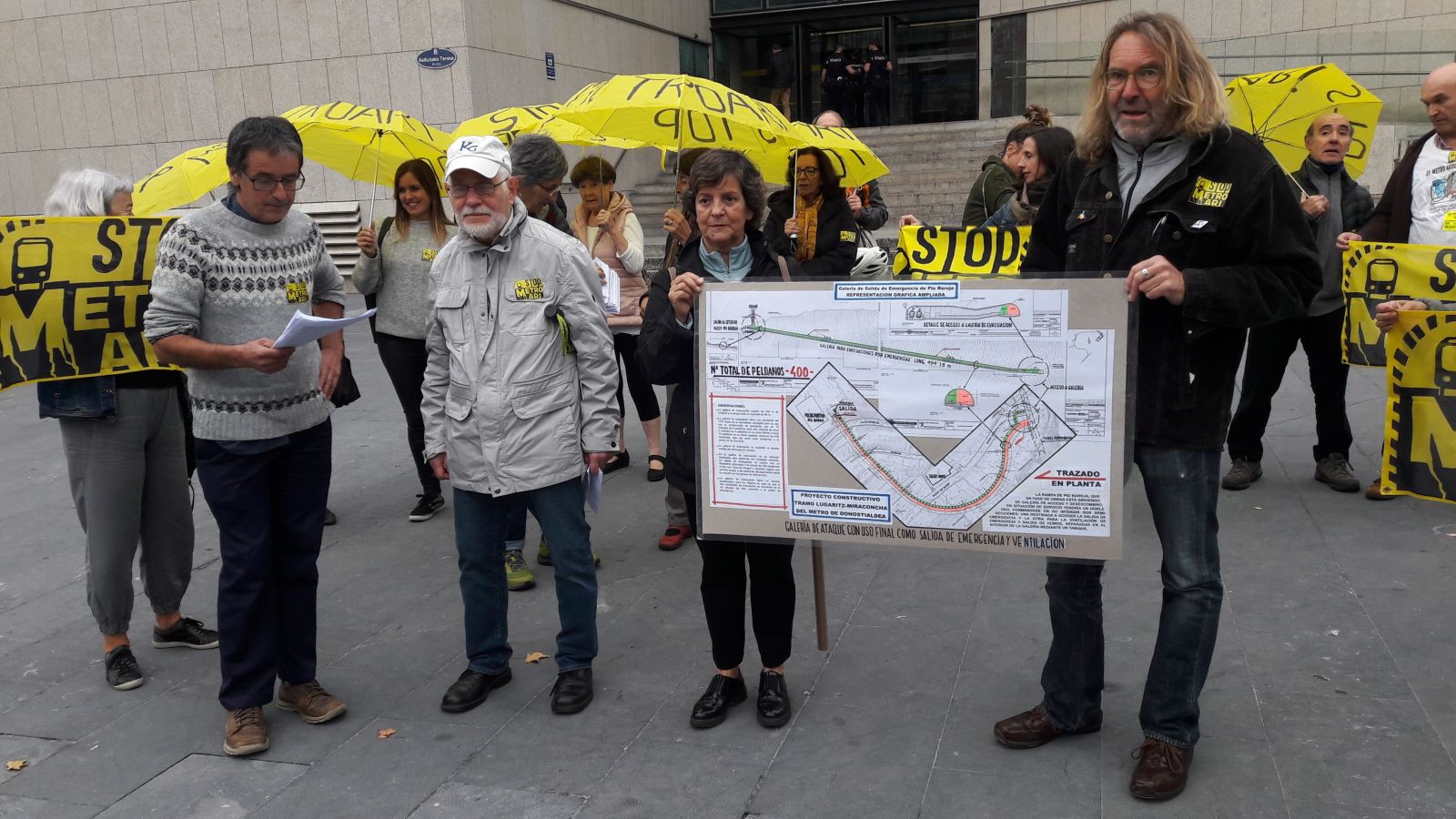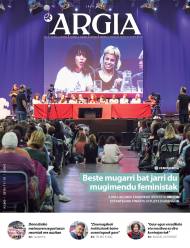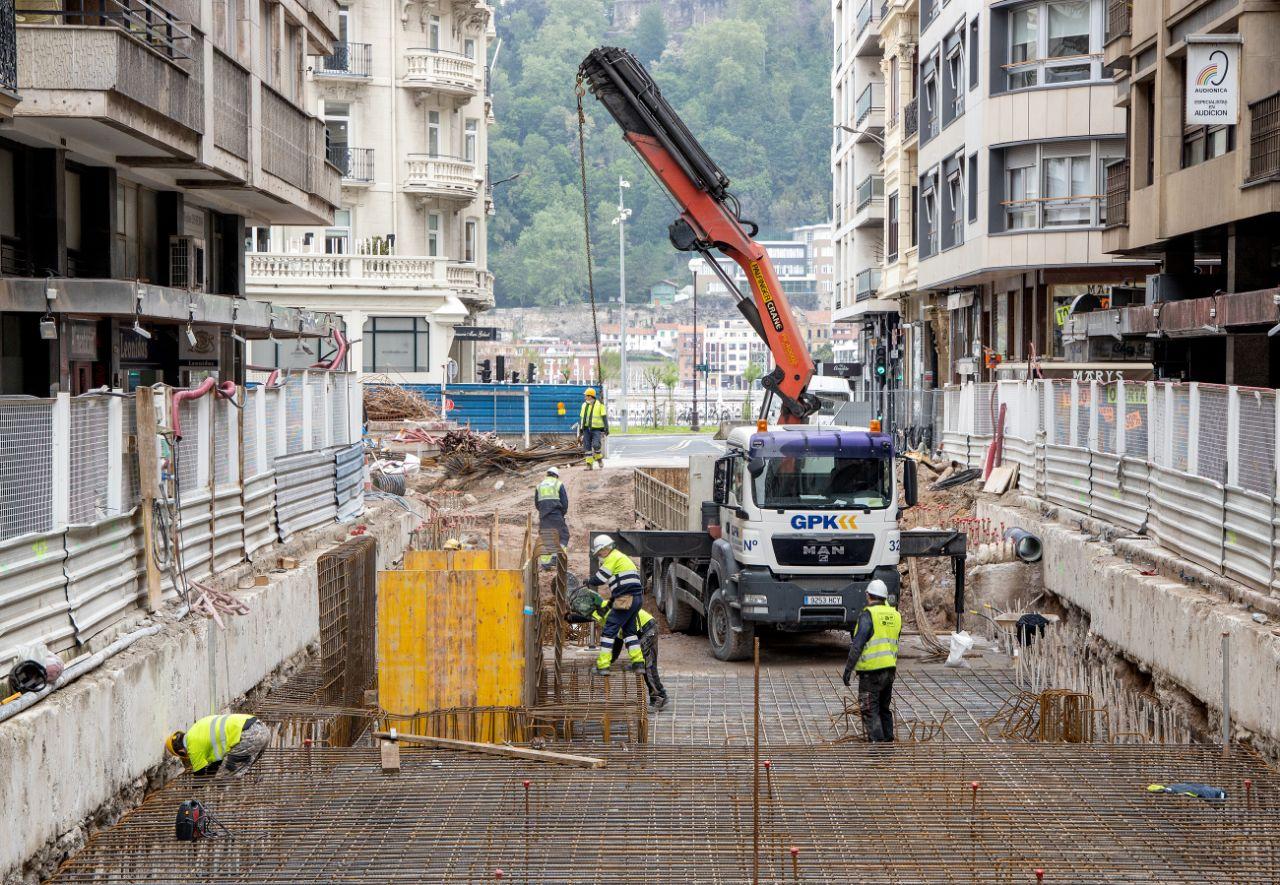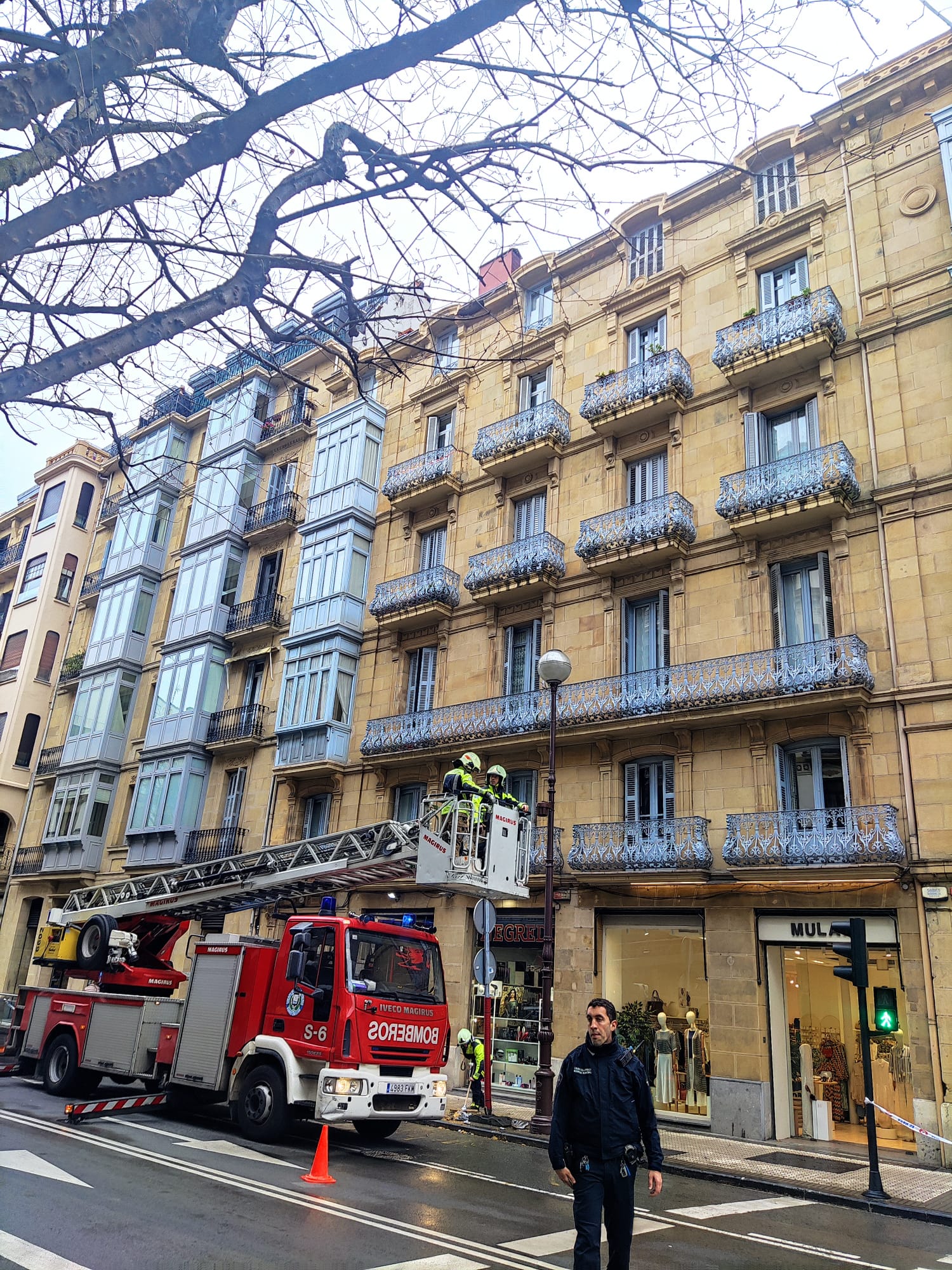The security measures of the Donostia-San Sebastián Metro are also in question
- German engineer Hans Heydemann has just turned 80. In his hometown of Stuttgart 21, he has been fighting for years against the gigantic 60-kilometer underground tunnel festival dubbed. Its specialty is fire prevention and emergency exits. The Satorralaia association has brought it to Donostia-San Sebastian through the metro project. In the plans it is observed that you want to install a single emergency exit, which has a length of 500 meters and a ladder of 400 steps. In this way, they have filed a complaint with the prosecutor's office asking for an investigation into whether this is a "crime against collective security".

Heydemann is an engineer specializing in the prevention of fires in underground tunnels. At the international days against the Giant Projects and Taxes held two years ago in Baiona, popular movements from all over Europe were cited. There were the opponents Satorralaia and Stuttgart 21. An administrative complaint lodged by the Donostiarras in December last year has concluded with an investigation into the regulations to be complied with by the underground railways. “The Basque Government responded that they did not have to comply with European law, but that the NFPA 130 of the EE.UU. They were the strictest and 100% compliant,” says Harry Stürmer of Satorralaia. The Councillor for Economic Development and Infrastructure, Arantza Tapia, also stated this in writing in the Basque Parliament, in response to a question by EH Bildu. As they had no idea what it was, they contacted Heydemann through the inhabitants of Stuttgart. And he gave himself up on the subject.
A consequence? "Satorralaia has filed a complaint with the Public Prosecutor's Office concerning the suburban area of Donostia-San Sebastián. An expert has found serious breaches of the regulations on tunnel safety and emergency evacuation,” he said at a press conference before the court on 22 October. The German engineer has seen that the Basque Government does not comply with the NFPA 130 regulations which he himself says. Various social and trade union actors have joined the initiative and called for the works to be stopped.
"In case of fire the only emergency exit there
is like trying to climb the staircase to the 23rd floor of a
building" Hans Heydemann
In the Austrian Alps, the Capru funicular was one of the symbols of the country’s modernity. Through the tunnel passing through the mountain, it reached a glacier. However, on 11 November 2000 there was what had never happened before: a fire in a funicular. As it passed through the tunnel, a stove on the lower part of the train burned and, as a result, everything started to burn. The tunnel had a giant chimney effect, absorbing oxygen from the bottom and dumping smoke, heat and fire upwards. Only 12 people were saved who managed to get out of the wagons and followed the recommendations of a person who had been a firefighter. They fled down in the tunnel. All those who threw up died choked by smoke and carbonized. A total of 155 people died in the biggest tragedy in Austria, according to Wikipedia, the free encyclopedia
“There are many accidents and also fires.” Next to this report, the table below shows the most relevant fires that have occurred in the underground tunnels. “According to my calculations, at least 1,500 people have died and 5,900 have been injured in the tunnel fires in the world,” says engineer Heydemann. When trains are in tunnels, they are very dangerous, especially because it generates a lot of smoke and a lot of heat inside.”
.jpg)
We stayed with Heydemann in the association of neighbors of Gros, in Plaza Nafarroa Beherea. There the members of Satorralaia meet every Monday. We want to talk in detail about his research. To briefly express the project of the subway intern, the Euskotren train currently coming from Hendaia arrives at the station of Amara, where is the Easo Square, from where the center of San Sebastian is served, and from there it goes back to reach the station of Lugaritz de Errotaburu in three minutes. This project, which has aroused so much controversy – in 2013 the Minister of Environment and Territorial Policy of the Basque Government, Ana Oregon, expressed opposition to the “pharaonic project” – aims to end the Easo train station and build a new infrastructure as a metro by the city of San Sebastian and a new station in Centro-La Concha with three departures, one in the street Loartain. Then, turning left, he would head underneath the bay towards the Old with a new station in Benta Berri, from where he would again link to Lugaritz to continue through Añorga with the current Euskotren path.
A single emergency exit and not just any
Hans Heydemann is particularly concerned about the safety of people. The leaders of the Basque Government have pointed out that they will strictly comply with US regulations NFPA 130 on railways. What is this? A safety regulation approved by the United States to prevent accidents on the underground and on the railways. The engineer has concluded that the Basque Government does not comply with the regulations, taking into account the distances between stations and stations and the number of emergency exits planned. NFPA 130 establishes, among other things, the need to install an emergency exit every 762 meters (2,500 feet, Anglo-Saxon measure), and according to this standard, in the 1,895 meter stretch between La Concha and Benta Berri there should be two emergency exits, and a third in the 1,187 meters between Benta Berri and Lugaritz. A total of three, where Eusko Trenbide Sarea has provided for a single one.
.jpg)
In addition, he has become angry with the German engineer about the only exit he has left. The one who knows San Sebastian knows where the sports club of Pío Baroja is, climbing the hill after the church of the Old Town, next to the Hotel Costa Vasca. There is an emergency exit. “Notice that the metro tunnel comes from the Concha Bay, about 15 meters deep underwater. The emergency exit from this place takes place on the Paseo Pío Baroja, at a height of 53 meters. This means that you have to climb a level of 68 meters, a 15% slope, 500 meters length in the form of 'S' and 400 steps in a single emergency exit that is foreseen." In the event of a fire, it is like trying to run up the stairs to the 23rd floor of a building, according to his own words. Imagine an adult, holding the baby in the arms, or going in a wheelchair. “For a young man it can be a challenge, but for others it is impossible.”
The NFPA 130 standard does not specify the length of an emergency exit, but Heydemann says it should be as short as possible, which has a length of 500 meters. “This is not normal, it is crazy,” he says.
Solution? On the one hand, make more exits; on the other hand, if you want to keep this exit, put a rescue elevator. “But that entails additional costs. Surely you have to build an infrastructure that will be used almost every ten years, you have to maintain it, you have to prove from time to time that it works well, you have risk of vandalism ...”.
And why were they going to make that exit? “Keep in mind that this kind of work generates cracks in the buildings. My theory is that they did not want to influence the housing at the front of the Concha, and as that space on the hill is public, they have preferred it.”
“In case of fire or accident, not all people would be able to leave this 500 meter exit, and some would need external help. This requires isolated rooms of 25 square meters for people to enter and wait for the rescue.” The plans that Heydermann has acquired do not provide for such a possibility. In the tunnel itself, in case something happens, exit sidewalks are needed on both sides of the track. These sidewalks have a width of 75 centimeters, according to the engineer, should be 80 centimeters, for example, to be able to take someone who is in a wheelchair, or to a parent who takes the child by hand. It considers, however, that it is very close, given that some projects have reached levels of 1.20 metres.
Fans, source of noise from neighbors
“As it has been seen in the planes, the placement of the fan is marked only in one section, being necessary a second for the generation of current. A wall is also needed, as if a single fan were placed, it would cause a short circuit of the air and would not be able to evacuate the tunnel smoke. In addition, they need silencers and I have not found any reference to them, as the fans will have to start them every four weeks to check that they work well and that they will not fail in the event of a fire. But the truth is that these fans produce an impressive noise, and logarithmic calculations point to a noise similar to that of an aircraft when taking off, about 118 DB.” Heydemann says he is unaware of the regulations here, but that in Germany no more than 50 DB can be produced in inhabited areas.

“I found it a mess. They do not comply with the requirements of the NFPA 130 regulation and the draft cannot do so. They should throw new planes, and for that it takes more time,” the veteran engineer has rounded.
In announcing the news of Satorralaia's complaint, the newspaper Noticias de Gipuzkoa finally picked up the position of Eusko Trenbide Sarea. Without going into detail, they assured that there was no irregularity and that they were prepared to give the relevant explanations. There is no clarification in the section on communications on your website.
“For the size of San Sebastian, this work is huge and very expensive. The authorities say it will officially cost EUR 180 million, but I have experience that it will be much more. With bus and train services, this city has enough to move around. I do not believe that the metro is in the general interest, but I see the interests of the constructors behind it. It makes no sense to promote such a project," he says.
Satorralaia has asked the prosecution to investigate the case of infanta Cristina. "If the Public Prosecutor's Office had an objective sense, it should accept the complaint and investigate, but, finally, I fear that it will not accept it because of its political effect. Judges and prosecutors want to go up, in Germany the same thing happens, most of the complaints do not accept them, because they have their own career in their head." Asked what I would say to the citizens fighting the subway pass, the City Hall says: "Don't despair, it's necessary for citizens to oppose the imposed projects: if you don't do anything, you won't get anything."
Satorralaia plataformak eman du gainkostuaren berri, informazioa Jaurlaritzari eskatutako txosten batetik aterata. Donostiako metroaren Mirakontxa-Easo zatiaren lanak 53 milioi eurotan esleitu ziren, eta egungo aurrekontua 139,4 milioi eurokoa da. Donostiako metro-pasantearen... [+]
























